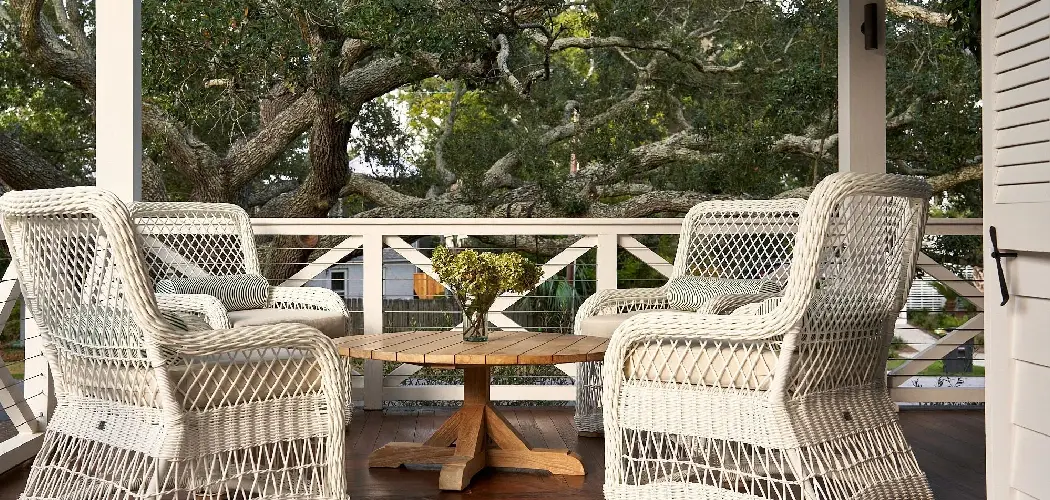Maintaining your powder coated aluminum patio furniture not only keeps it looking great but also extends its lifespan. Over time, dirt, grime, and environmental elements can accumulate on the surface, dulling its appearance and potentially causing damage.
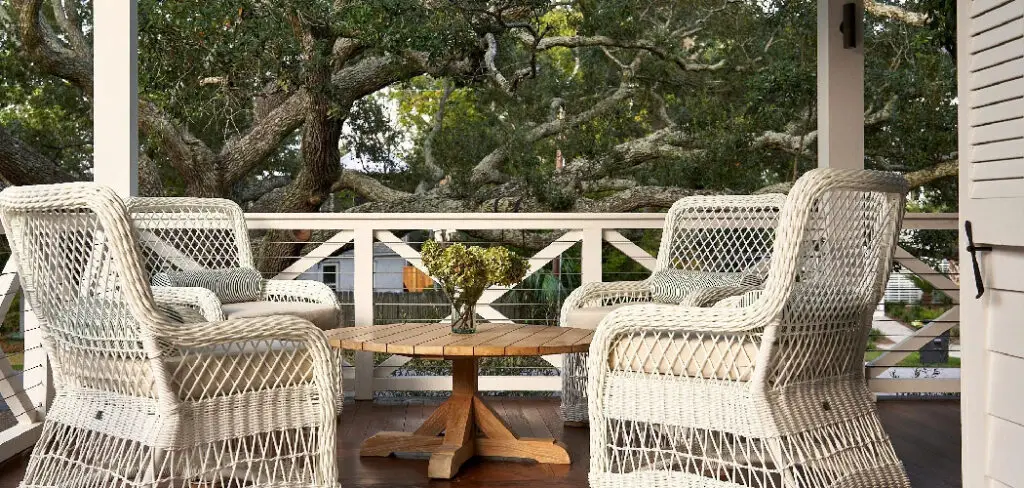
Fortunately, cleaning powder coated aluminum furniture is a straightforward process that requires minimal effort. This guide will walk you through simple and effective steps for how to clean powder coated aluminum patio furniture.
What Is Powder Coated Aluminum?
Powder coated aluminum is a durable, versatile material commonly used in outdoor furniture, architectural elements, and various industrial applications. The powder coating process involves applying a fine, dry powder to the surface of aluminum, which is then heated to form a smooth, protective layer.
This coating not only enhances the material’s appearance with a wide range of color and texture options but also provides exceptional resistance to corrosion, UV damage, and general wear and tear. Powder coated aluminum is lightweight, low-maintenance, and designed to withstand harsh weather conditions, making it an ideal choice for outdoor use.
Supplies Needed for Cleaning
To maintain the appearance and longevity of powder coated aluminum, having the right cleaning supplies is essential. You will need a bucket of warm water, a mild detergent or soap free from harsh chemicals, a soft sponge or cloth, and a non-abrasive brush for tougher grime. Additionally, microfiber towels are recommended for drying and polishing the surface to prevent streaks.
Avoid using abrasive cleaning pads or solvents, as these can damage the protective coating. With these supplies, you can keep your powder coated aluminum looking pristine and durable.
10 Methods How to Clean Powder Coated Aluminum Patio Furniture
1. Start with a Gentle Dusting to Remove Loose Debris
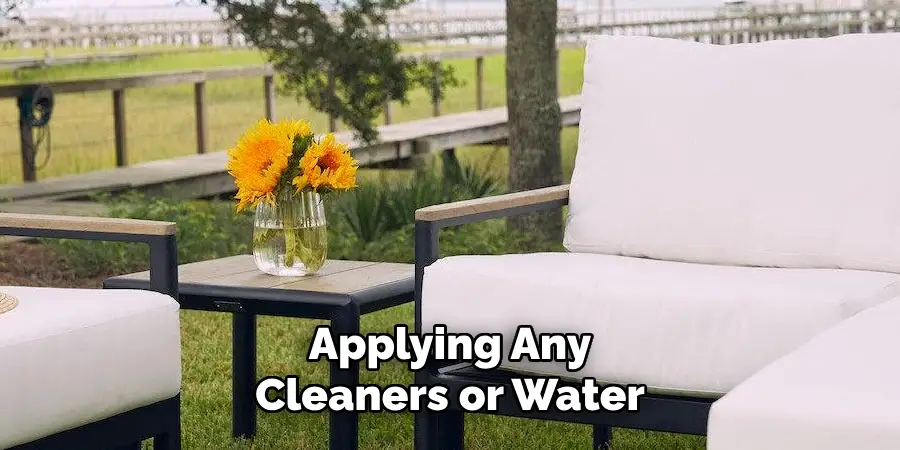
Before applying any cleaners or water, always begin the cleaning process by removing loose debris from your powder-coated aluminum patio furniture. Use a soft-bristled brush, microfiber cloth, or even a handheld vacuum to lift away dust, pollen, dry leaves, and cobwebs that may have settled into corners or crevices.
Powder-coated surfaces can be damaged if abrasive particles are rubbed into the finish during washing, so this step ensures you’re not grinding grit into the coating. Gentle dusting also makes the cleaning process more efficient and helps avoid streaking or scratching.
2. Use Mild Soap and Warm Water as Your Primary Cleaning Solution
For routine cleaning, a bucket of warm water mixed with a few drops of mild dish soap is often all you need. Avoid harsh or caustic cleaners that can damage the powder coating’s protective barrier. Dip a soft sponge or cloth into the soapy water and wipe the furniture’s surfaces in even, circular motions.
This method effectively lifts dirt, grime, and smudges while preserving the powder-coated finish. Pay special attention to arms, seats, and horizontal surfaces where grime tends to accumulate. Rinse with clean water immediately to prevent soap residue from drying on the surface.
3. Rinse Thoroughly with a Garden Hose to Remove Residue
After scrubbing your aluminum furniture with soap, it’s essential to rinse off all cleaning solution to prevent buildup or streaking. Use a garden hose with moderate pressure—not a pressure washer, which can strip the powder coat if too intense. Direct the hose at all surfaces, including under the arms and legs where soapy water might hide.
Ensure you rinse away all the suds to maintain the powder coat’s sheen and integrity. Allowing soap to dry on the surface can lead to film or dull patches, especially on darker-colored furniture.
4. Dry with a Soft Towel to Prevent Water Spots and Streaking
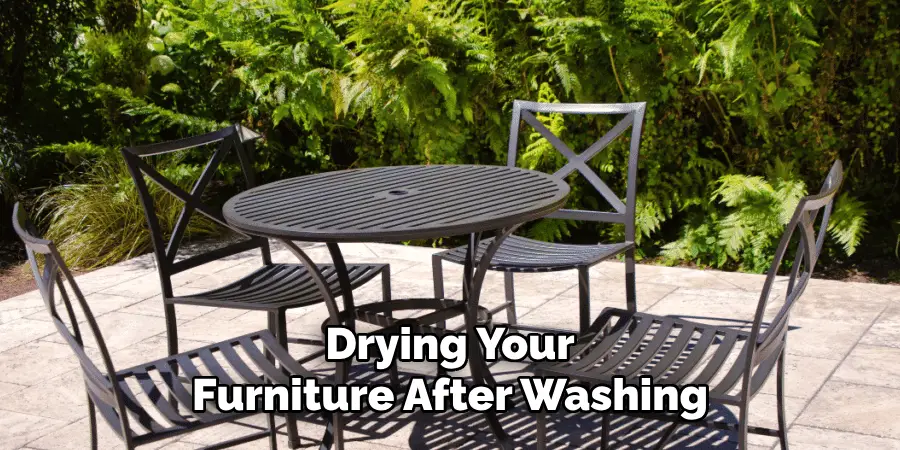
Though aluminum won’t rust, drying your furniture after washing helps prevent water spots, particularly if you live in an area with hard water. Use a lint-free towel or microfiber cloth to gently wipe the surfaces dry. This is especially important for powder-coated finishes, which can show streaks or dull patches if water is left to evaporate naturally.
Drying also gives you the opportunity to inspect your furniture up close, helping you spot any scratches, wear, or needed touch-ups before they become larger problems.
5. Remove Stubborn Stains with a Baking Soda Paste
If you encounter stubborn spots or stains—such as tree sap, bird droppings, or mildew—you can use a paste made from baking soda and water. Mix the two into a thick but spreadable consistency, then apply it to the affected area with a soft cloth or sponge.
Let it sit for a few minutes, then gently rub in a circular motion and rinse with clean water. Baking soda is mildly abrasive but safe for powder coating when used carefully, making it ideal for lifting tough grime without harming the surface.
6. Avoid Abrasive Scrubbers, Steel Wool, or Harsh Chemicals
Powder-coated aluminum is durable, but it’s not indestructible. Scrubbing with steel wool, abrasive pads, or harsh chemicals like ammonia, bleach, or acetone can scratch or degrade the finish, leading to premature wear or corrosion of the metal beneath.
Instead, stick to soft materials and pH-neutral cleaners. If you’re not sure whether a cleaner is safe, test it on a hidden area first. Damaging the powder coating not only affects the appearance—it also weakens the layer that protects your furniture from UV rays, rain, and general wear.
7. Spot-Treat Mildew with Vinegar or a Specialized Cleaner
In humid or rainy environments, mildew can occasionally develop on patio furniture, even on powder-coated surfaces. To address this, mix equal parts white vinegar and water in a spray bottle.
Apply the solution directly to the affected areas, let it sit for 10–15 minutes, then scrub gently with a soft brush and rinse thoroughly. For more extensive mildew issues, a commercial mildew remover safe for powder-coated finishes may be necessary. Prompt mildew removal helps maintain a clean, fresh appearance and protects the structural integrity of the furniture.
8. Apply Automotive Wax for Added Shine and Protection
Once your aluminum furniture is clean and dry, consider applying a thin coat of automotive wax or polish formulated for powder-coated surfaces. This adds a protective barrier that repels dust, water, and UV rays while enhancing the color and shine of the finish.
Apply the wax using a soft cloth, following the instructions on the product, and then buff gently to a smooth finish. This treatment is especially effective for darker-colored furniture, which tends to show fading or chalking more readily. Waxing a few times a year can keep your furniture looking showroom-new.
9. Inspect for Chips, Scratches, or Rust Spots After Cleaning
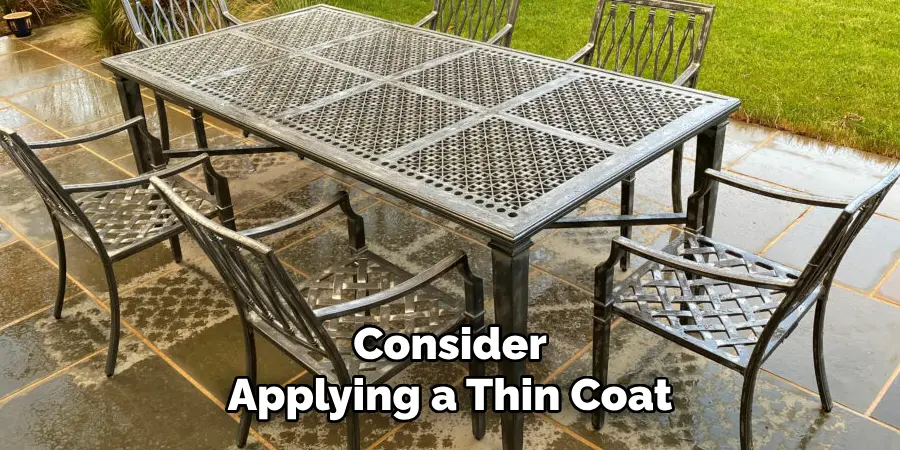
While cleaning, take the opportunity to thoroughly inspect the furniture for any chips or cracks in the powder coating.
Even though aluminum doesn’t rust like iron or steel, any exposed metal can oxidize over time, especially in salty or wet climates. Small chips should be touched up with a matching outdoor paint or powder-coat repair kit to prevent further damage. Addressing small issues promptly prevents bigger problems down the road and maintains the furniture’s aesthetic and protective quality.
10. Maintain a Seasonal Cleaning Schedule for Long-Term Results
Consistency is key when it comes to caring for outdoor furniture. Establish a seasonal cleaning routine—at minimum, clean your powder-coated aluminum pieces thoroughly at the beginning and end of each season. During periods of heavy use or exposure to extreme weather, more frequent maintenance may be needed.
In winter months or rainy seasons, consider storing the furniture or covering it with breathable, waterproof covers. Regular care not only keeps the furniture looking pristine but also prolongs its life, allowing you to enjoy your patio investment for years to come.
Maintenance and Upkeep
Maintaining your outdoor furniture doesn’t have to be a daunting task if you follow a consistent upkeep schedule. Begin by inspecting the furniture regularly for any signs of wear or damage, such as loose screws, rust, or chipped finishes.
Address these issues promptly to prevent further deterioration. For powder-coated aluminum furniture, use a mild soap and water solution with a soft cloth or sponge for cleaning, avoiding harsh chemicals or abrasive materials that could damage the coating. Rinse thoroughly to remove residues and allow it to air dry completely.
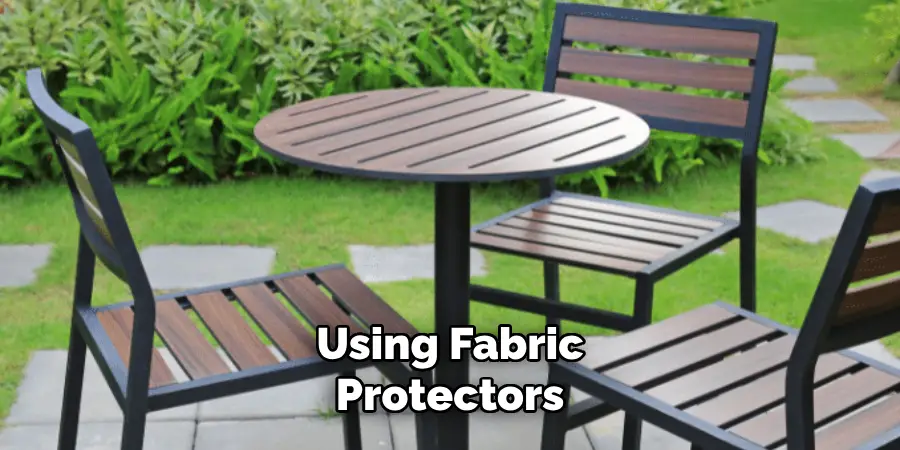
For cushions and fabric components, check the manufacturer’s care instructions, and consider using fabric protectors to repel dirt and moisture. Store cushions indoors when not in use to prevent fading and mildew. Seal wooden furniture annually with a wood protector or oil to maintain its natural beauty and resistance to weathering.
With these care practices, your outdoor furniture will remain both functional and stylish, providing comfort and appeal to your space for years to come.
Conclusion
Powder-coated aluminum patio furniture is prized for its lightweight durability, weather resistance, and elegant appearance—but it still requires regular maintenance to stay in peak condition.
By following these ten methods—from using gentle soap and proper rinsing to waxing, spot-treating, and inspecting—you can protect the powder coat, prevent staining, and preserve the integrity of your outdoor setup. Thanks for reading, and we hope this has given you some inspiration on how to clean powder coated aluminum patio furniture!

